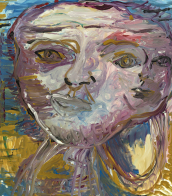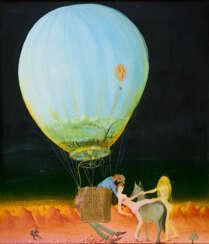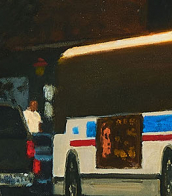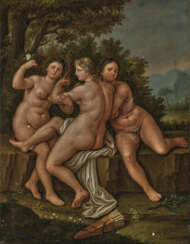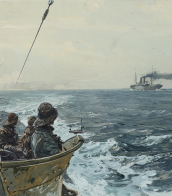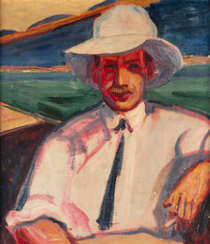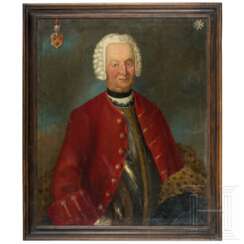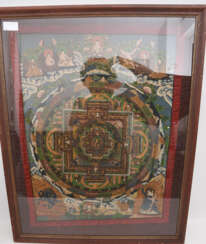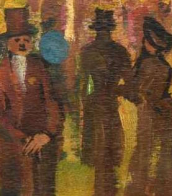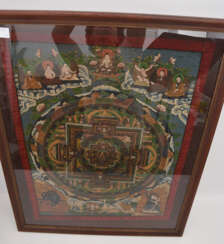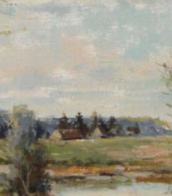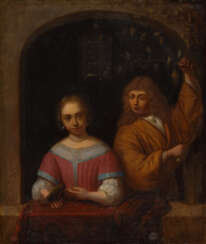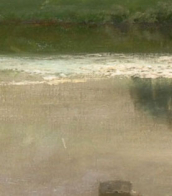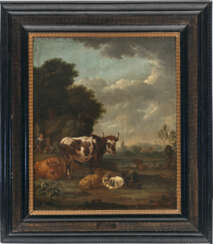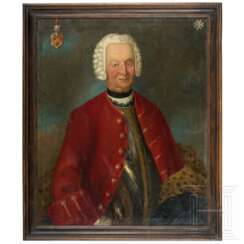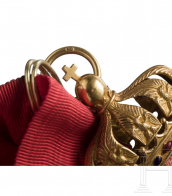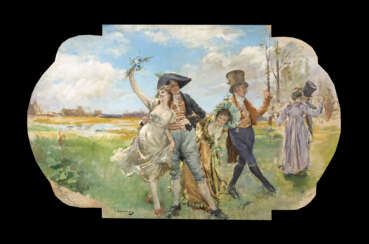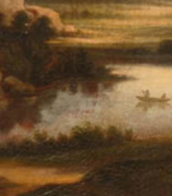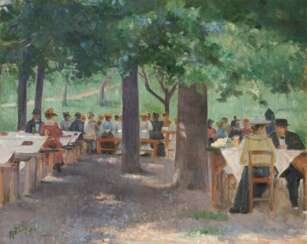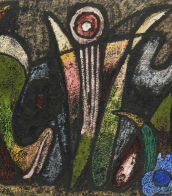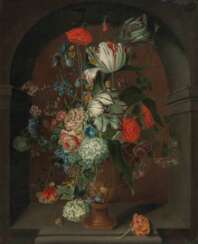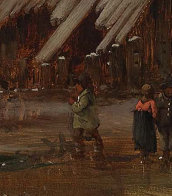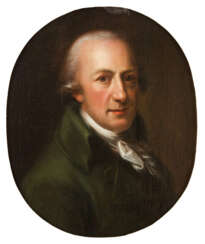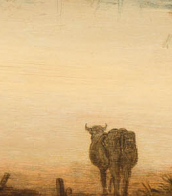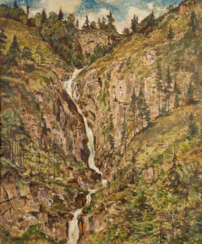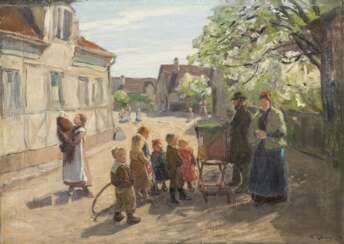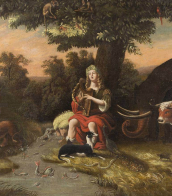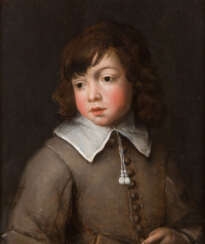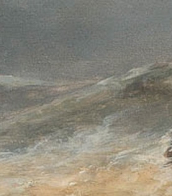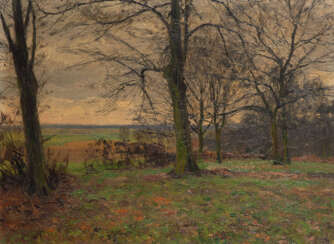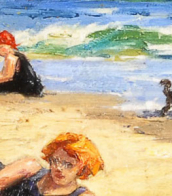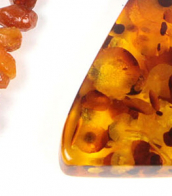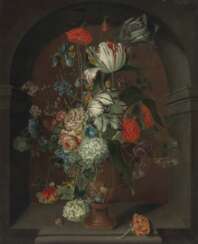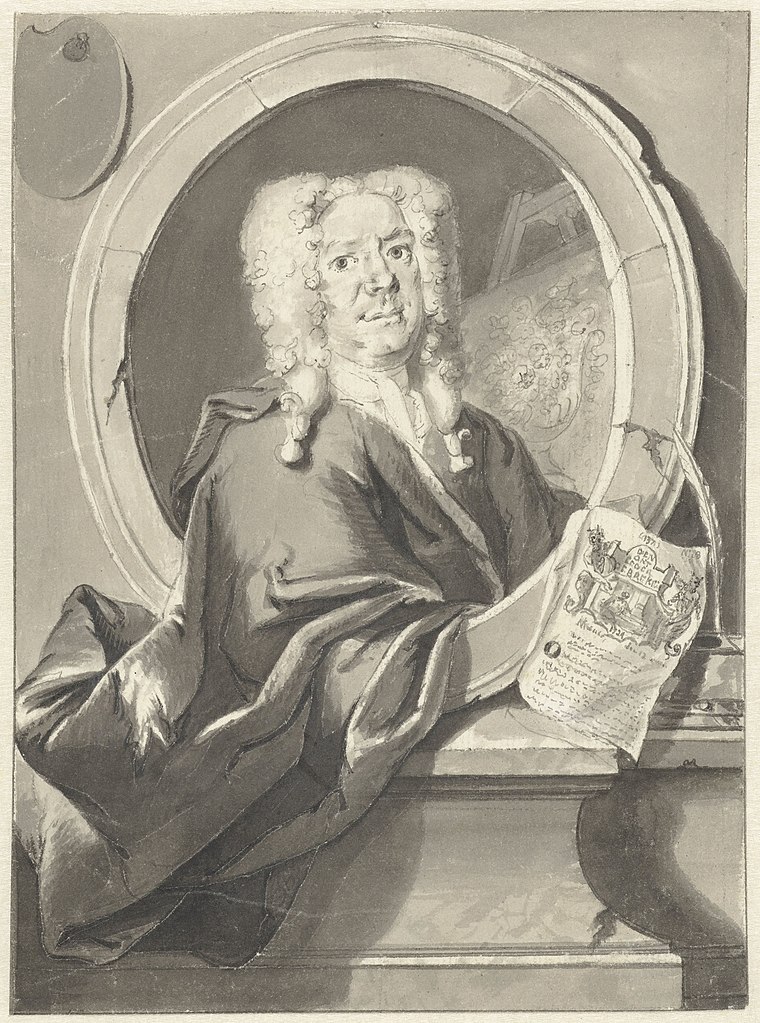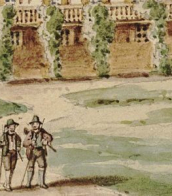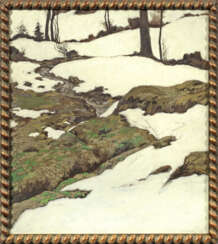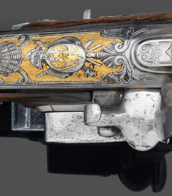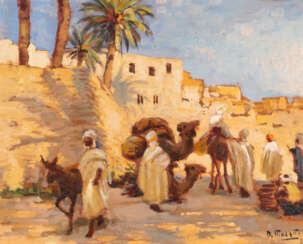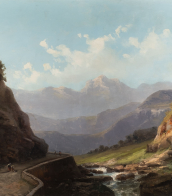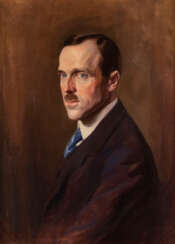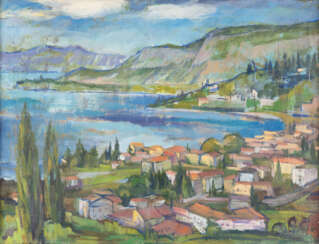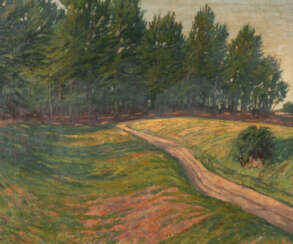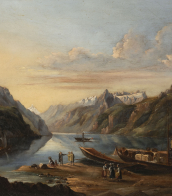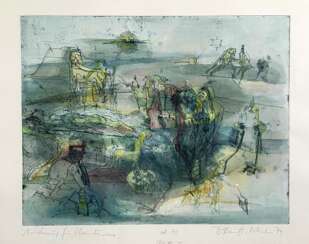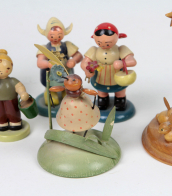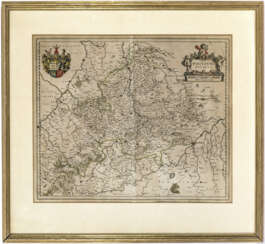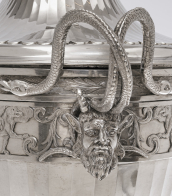rahmen (68 x 61
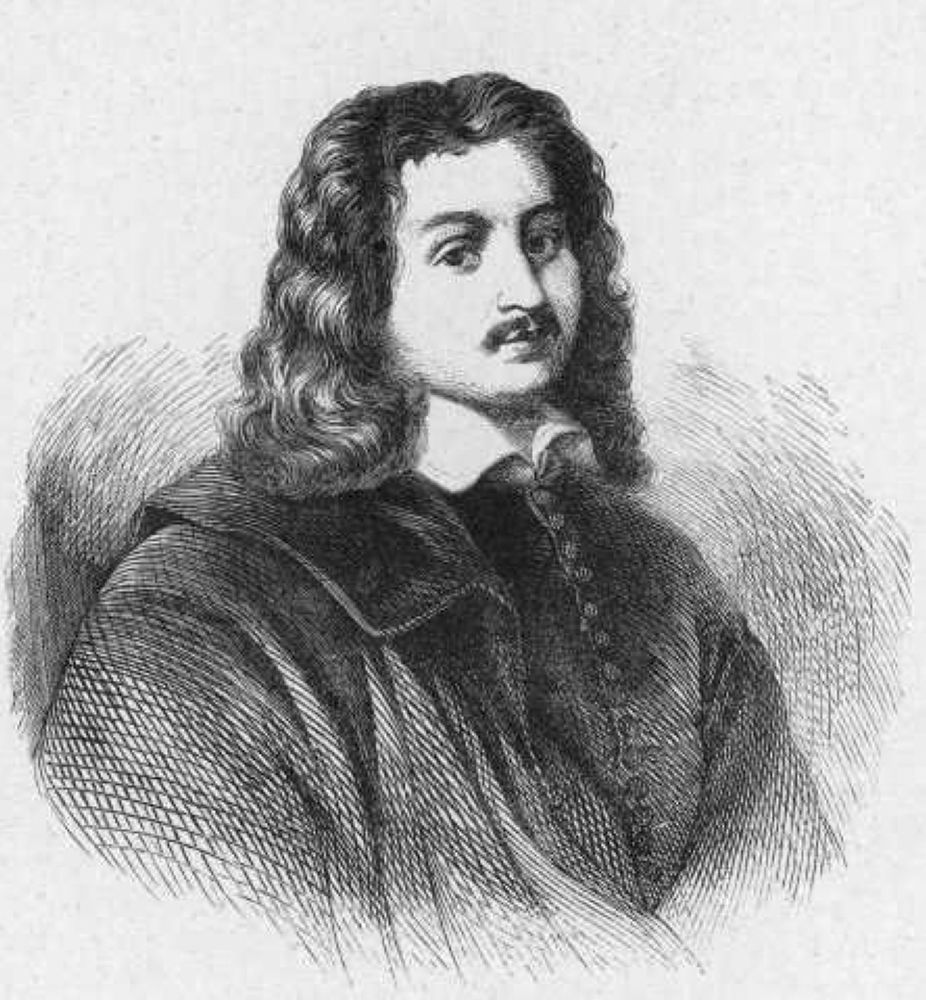
Nicolaes Pieterszoon Berchem was a highly esteemed and prolific Dutch Golden Age painter of pastoral landscapes, populated with mythological or biblical figures, but also of a number of allegories and genre pieces.
He was a member of the second generation of "Dutch Italianate landscape" painters. These were artists who travelled to Italy, or aspired to, in order to soak up the romanticism of the country, bringing home sketchbooks full of drawings of classical ruins and pastoral imagery. His paintings, of which he produced an immense number, (Hofstede de Groot claimed around 850, although many are misattributed), were in great demand, as were his 80 etchings and 500 drawings. His landscapes, painted in the Italian style of idealized rural scenes, with hills, mountains, cliffs and trees in a golden dawn are sought after. Berchem also painted inspired and attractive human and animal figures (staffage) in works of other artists, like Allaert van Everdingen, Jan Hackaert, Gerrit Dou, Meindert Hobbema and Willem Schellinks.
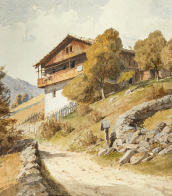
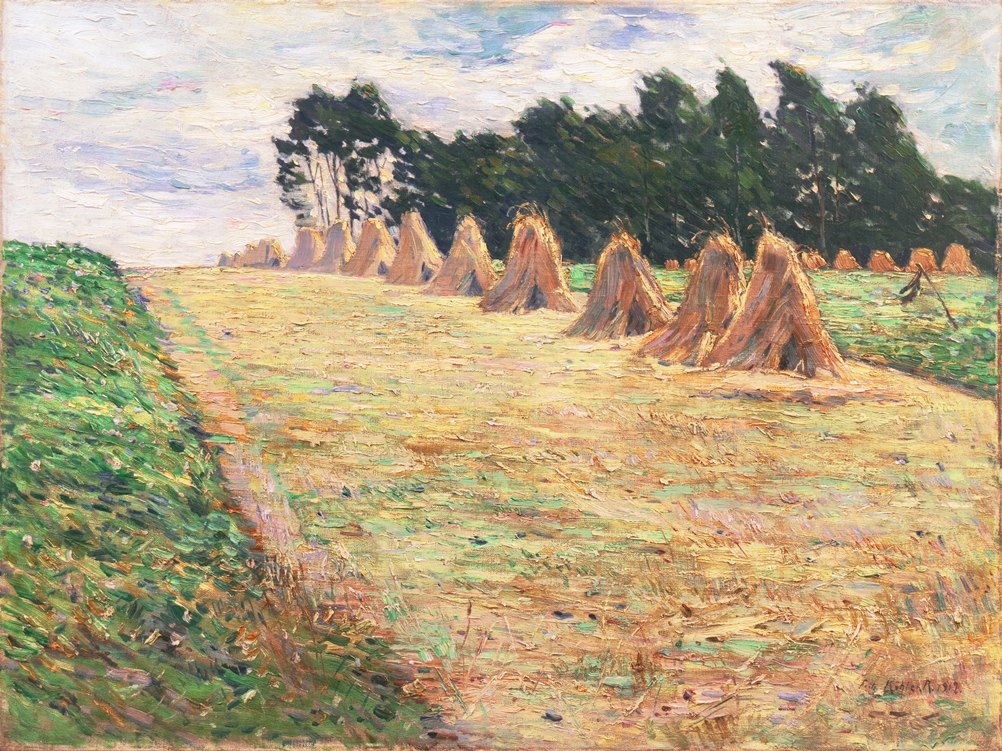
Fritz Köhler (birth name Friedrich Köhler) was a German marine and landscape painter.
As a young man, Köhler spent much time on merchant ships on the seas, then studied painting in Hamburg and Weimar. He painted coastal and rural landscapes in calm colors. Fritz Köhler was a member of the Imperial Association of Fine Artists in Germany and the Düsseldorf Malkasten Artists' Association, and participated in numerous exhibitions.

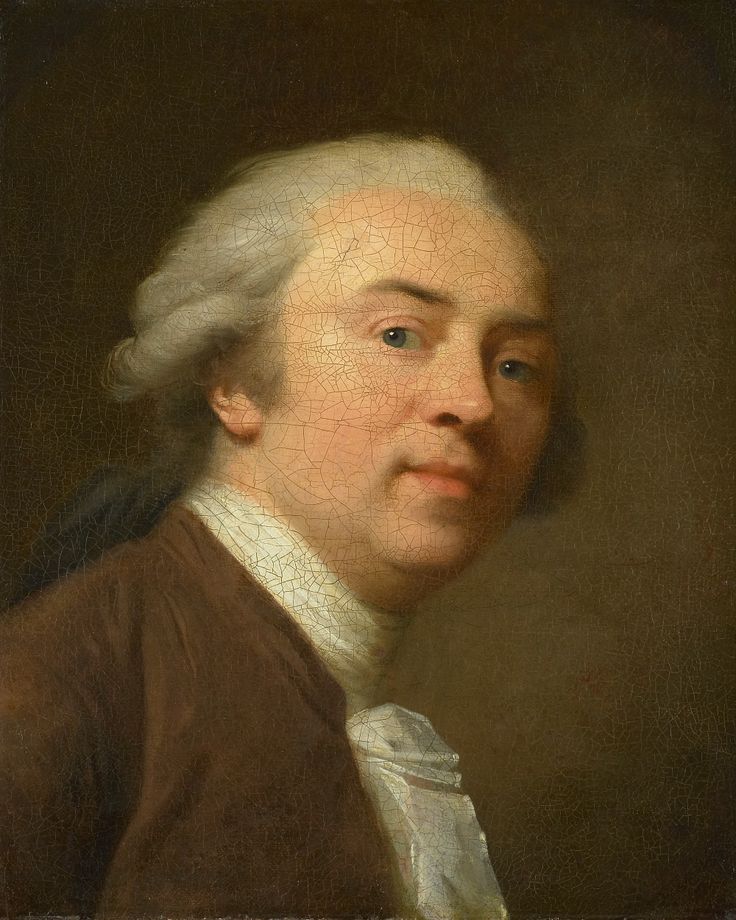
Johann Friedrich August Tischbein was a German painter of the last quarter of the 18th and early 19th centuries. He is known as an academic painter of the Classical era, specializing in portraits, a representative of a large dynasty of artists.
August Tischbein was court painter to Prince Friedrich Karl August and Prince Leopold III Friedrich Franz. He traveled to Italy, where he improved his skills in portrait painting, and achieved success in Berlin and Dresden. In 1799, the artist became director of the Academy of Fine Arts in Leipzig. From 1806 to 1808 he worked in St. Petersburg, where he created portraits of courtiers and representatives of the aristocracy. His works are characterized by strict composition, exquisite coloring and sentimental style of the era. Several of his paintings can be found in the St. Petersburg Hermitage.
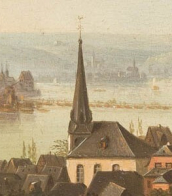

Lovis Corinth was a German artist and writer whose mature work as a painter and printmaker realized a synthesis of impressionism and expressionism.
Corinth studied in Paris and Munich, joined the Berlin Secession group, later succeeding Max Liebermann as the group's president. His early work was naturalistic in approach. Corinth was initially antagonistic towards the expressionist movement, but after a stroke in 1911 his style loosened and took on many expressionistic qualities. His use of color became more vibrant, and he created portraits and landscapes of extraordinary vitality and power. Corinth's subject matter also included nudes and biblical scenes.
